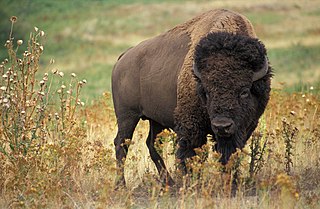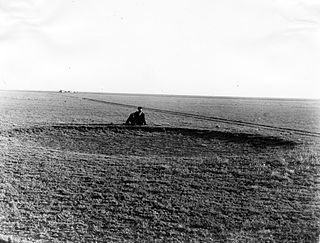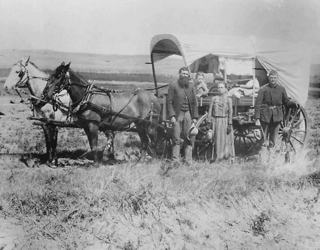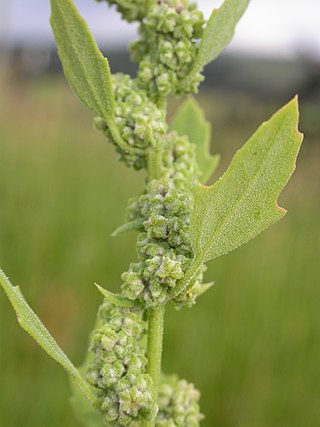| State and county name | Area in square miles (km sq) (includes both land and water area) | Greatest population (census year) | 2020 population | Percentage decline in population | 2020 population density per sq. mi |
|---|
| Colorado |
|---|
| Baca | 2,557 square miles (6,620 km2) | 10,570 (1930) | 3,506 | -66.83% | 1.37 |
| Huerfano | 1,593 square miles (4,130 km2) | 17,062 (1930) | 6,820 | -60.03% | 4.28 |
| Kiowa | 1,786 square miles (4,630 km2) | 3,786 (1930) | 1,446 | -61.81% | 0.81 |
| Las Animas | 4,775 square miles (12,370 km2) | 38,975 (1930) | 14,555 | -62.66% | 3.05 |
| Iowa |
|---|
| Adams | 426 square miles (1,100 km2) | 13,601 (1900) | 3,704 | -72.77% | 8.69 |
| Fremont | 517 square miles (1,340 km2) | 18,546 (1900) | 6,605 | -62.58% | 12.78 |
| Monroe | 434 square miles (1,120 km2) | 25,429 (1900) | 7,577 | -70.20% | 17.46 |
| Ringgold | 539 square miles (1,400 km2) | 15,325 (1900) | 4,663 | -69.57% | 8.65 |
| Taylor | 535 square miles (1,390 km2) | 18,784 (1900) | 5,896 | -68.61% | 11.02 |
| Wayne | 527 square miles (1,360 km2) | 17,491 (1900) | 6,495 | -62.87% | 12.32 |
| Kansas |
|---|
| Chase | 778 square miles (2,020 km2) | 8,246 (1900) | 2,572 | -68.81% | 3.31 |
| Chautauqua | 645 square miles (1,670 km2) | 12,297 (1890) | 3,379 | -72.52% | 5.24 |
| Cheyenne | 1,021 square miles (2,640 km2) | 6,948 (1930) | 2,616 | -62.35% | 2.56 |
| Clark | 977 square miles (2,530 km2) | 4,989 (1920) | 1,991 | -60.09% | 2.04 |
| Comanche | 790 square miles (2,000 km2) | 5,302 (1920) | 1,689 | -68.14% | 2.14 |
| Decatur | 894 square miles (2,320 km2) | 9,234 (1900) | 2,764 | -70.07% | 3.09 |
| Edwards | 622 square miles (1,610 km2) | 7,295 (1930) | 2,907 | -60.15% | 4.67 |
| Elk | 650 square miles (1,700 km2) | 12,216 (1890) | 2,483 | -79.67% | 3.82 |
| Graham | 899 square miles (2,330 km2) | 8,700 (1910) | 2,415 | -72.24% | 2.69 |
| Greenwood | 1,153 square miles (2,990 km2) | 19,235 (1930) | 6,016 | -68.72% | 5.22 |
| Harper | 803 square miles (2,080 km2) | 14,748 (1910) | 5,485 | -62.81% | 6.83 |
| Jewell | 914 square miles (2,370 km2) | 19,420 (1900) | 2,932 | -84.90% | 3.21 |
| Kiowa | 723 square miles (1,870 km2) | 6,174 (1910) | 2,460 | -60.16% | 3.40 |
| Lincoln | 720 square miles (1,900 km2) | 10,142 (1910) | 2,939 | -71.02% | 4.08 |
| Mitchell | 719 square miles (1,860 km2) | 15,037 (1890) | 5,796 | -61.46% | 8.06 |
| Ness | 1,075 square miles (2,780 km2) | 8,358 (1930) | 2,687 | -67.85% | 2.50 |
| Osborne | 864 square miles (2,240 km2) | 12,827 (1910) | 3,500 | -72.71% | 4.05 |
| Phillips | 895 square miles (2,320 km2) | 14,442 (1900) | 4,981 | -65.51% | 5.57 |
| Rawlins | 1,070 square miles (2,800 km2) | 6,790 (1920) | 2,561 | -62.28% | 2.39 |
| Republic | 720 square miles (1,900 km2) | 18,248 (1900) | 4,674 | -74.39% | 6.49 |
| Rush | 718 square miles (1,860 km2) | 9,093 (1930) | 2,956 | -67.49% | 4.12 |
| Smith | 897 square miles (2,320 km2) | 16,384 (1900) | 3,570 | -78.21% | 3.98 |
| Stafford | 795 square miles (2,060 km2) | 12,510 (1910) | 4,072 | -67.45% | 5.12 |
| Washington | 899 square miles (2,330 km2) | 21,963 (1900) | 5,530 | -74.82% | 6.15 |
| Woodson | 505 square miles (1,310 km2) | 10,022 (1900) | 3,115 | -68.92% | 6.17 |
| Minnesota |
|---|
| Kittson | 1,104 square miles (2,860 km2) | 10,717 (1940) | 4,207 | -60.75% | 3.81 |
| Red Lake | 432 square miles (1,120 km2) | 12,195 (1900) | 3,935 | -67.73% | 9.11 |
| Missouri |
|---|
| Atchison | 550 square miles (1,400 km2) | 16,501 (1900) | 5,305 | -67.85% | 9.65 |
| Carroll | 701 square miles (1,820 km2) | 26,455 (1900) | 8,495 | -67.89% | 12.12 |
| Chariton | 767 square miles (1,990 km2) | 26,826 (1900) | 7,408 | -72.38% | 9.66 |
| Daviess | 569 square miles (1,470 km2) | 21,325 (1900) | 8,430 | -60.47% | 14.82 |
| Gentry | 492 square miles (1,270 km2) | 20,554 (1900) | 6,162 | -70.02% | 12.52 |
| Harrison | 726 square miles (1,880 km2) | 24,398 (1900) | 8,157 | -66.57% | 11.24 |
| Holt | 470 square miles (1,200 km2) | 17,083 (1900) | 4,223 | -75.28% | 8.99 |
| Knox | 507 square miles (1,310 km2) | 13,501 (1890) | 3,744 | -72.27% | 7.38 |
| Mercer | 455 square miles (1,180 km2) | 14,706 (1900) | 3,538 | -75.94% | 7.78 |
| Putnam | 520 square miles (1,300 km2) | 16,668 (1900) | 4,681 | -71.92% | 9.00 |
| Schuyler | 308 square miles (800 km2) | 11,249 (1890) | 4,032 | -64.16% | 13.09 |
| Scotland | 439 square miles (1,140 km2) | 13,232 (1900) | 4,716 | -64.36% | 10.74 |
| Shelby | 502 square miles (1,300 km2) | 16,167 (1900) | 6,103 | -62.25% | 12.16 |
| Sullivan | 652 square miles (1,690 km2) | 20,282 (1900) | 5,999 | -70.42% | 9.20 |
| Worth | 267 square miles (690 km2) | 9,832 (1900) | 1,973 | -79.93% | 7.39 |
| Montana |
|---|
| Carter | 3,348 square miles (8,670 km2) | 4,136 (1930) | 1,415 | -65.79% | 0.42 |
| Chouteau | 3,997 square miles (10,350 km2) | 17,191 (1910) | 5,895 | -65.71% | 1.47 |
| Daniels | 1,426 square miles (3,690 km2) | 5,553 (1930) | 1,661 | -70.09% | 1.16 |
| Garfield | 4,847 square miles (12,550 km2) | 5,368 (1920) | 1,173 | -78.15% | 0.24 |
| Golden Valley | 1,176 square miles (3,050 km2) | 2,126 (1930) | 823 | -61.29% | 0.70 |
| Judith Basin | 1,871 square miles (4,850 km2) | 5,238 (1930) | 2,023 | -61.38% | 1.08 |
| McCone | 2,683 square miles (6,950 km2) | 4,790 (1930) | 1,729 | -65.21% | 0.64 |
| Musselshell | 1,871 square miles (4,850 km2) | 12,030 (1930) | 4,730 | -60.68% | 2.53 |
| Petroleum | 1,674 square miles (4,340 km2) | 2,045 (1930) | 496 | -75.75% | 0.30 |
| Prairie | 1,743 square miles (4,510 km2) | 3,941 (1930) | 1,088 | -72.39% | 0.62 |
| Sheridan | 1,706 square miles (4,420 km2) | 13,847 (1920) | 3,539 | -74.44% | 2.07 |
| Treasure | 984 square miles (2,550 km2) | 1,990 (1920) | 762 | -61.71% | 0.77 |
| Wheatland | 1,428 square miles (3,700 km2) | 5,619 (1920) | 2,069 | -63.18% | 1.45 |
| Wibaux | 890 square miles (2,300 km2) | 3,113 (1920) | 937 | -69.90% | 1.05 |
| Nebraska |
|---|
| Arthur | 718 square miles (1,860 km2) | 1,412 (1920) | 434 | -69.26% | 0.60 |
| Banner | 746 square miles (1,930 km2) | 2,435 (1890) | 674 | -72.32% | 0.90 |
| Blaine | 714 square miles (1,850 km2) | 1,778 (1920) | 431 | -75.76% | 0.60 |
| Boone | 687 square miles (1,780 km2) | 14,738 (1930) | 5,379 | -63.50% | 7.83 |
| Boyd | 545 square miles (1,410 km2) | 8,826 (1910) | 1,810 | -79.49% | 3.32 |
| Clay | 574 square miles (1,490 km2) | 16,310 (1890) | 6,104 | -62.58% | 10.63 |
| Custer | 2,576 square miles (6,670 km2) | 26,407 (1920) | 10,545 | -60.07% | 4.09 |
| Dundy | 921 square miles (2,390 km2) | 5,610 (1930) | 1,654 | -70.52% | 1.80 |
| Fillmore | 577 square miles (1,490 km2) | 15,087 (1900) | 5,551 | -63.21% | 9.62 |
| Franklin | 576 square miles (1,490 km2) | 10,303 (1910) | 2,889 | -71.96% | 5.02 |
| Frontier | 980 square miles (2,500 km2) | 8,781 (1900) | 2,519 | -71.31% | 2.57 |
| Furnas | 721 square miles (1,870 km2) | 12,373 (1900) | 4,636 | -62.53% | 6.43 |
| Garden | 1,731 square miles (4,480 km2) | 5,099 (1930) | 1,874 | -63.25% | 1.08 |
| Gosper | 463 square miles (1,200 km2) | 5,301 (1900) | 1,893 | -64.29% | 4.09 |
| Greeley | 571 square miles (1,480 km2) | 8,685 (1920) | 2,188 | -74.81% | 3.83 |
| Harlan | 574 square miles (1,490 km2) | 9,578 (1910) | 3,073 | -67.92% | 5.35 |
| Hayes | 713 square miles (1,850 km2) | 3,603 (1930) | 856 | -76.24% | 1.20 |
| Hitchcock | 718 square miles (1,860 km2) | 7,269 (1930) | 2,616 | -64.01% | 3.64 |
| Keya Paha | 774 square miles (2,000 km2) | 3,594 (1920) | 769 | -78.60% | 0.99 |
| Logan | 571 square miles (1,480 km2) | 2,014 (1930) | 716 | -64.45% | 1.25 |
| Loup | 571 square miles (1,480 km2) | 2,188 (1910) | 607 | -72.26% | 1.06 |
| McPherson | 860 square miles (2,200 km2) | 2,470 (1910) | 399 | -83.85% | 0.46 |
| Nance | 448 square miles (1,160 km2) | 8,926 (1910) | 3,380 | -62.13% | 7.54 |
| Nuckolls | 576 square miles (1,490 km2) | 13,236 (1920) | 4,095 | -69.06% | 7.11 |
| Pawnee | 433 square miles (1,120 km2) | 11,770 (1900) | 2,544 | -78.39% | 5.88 |
| Richardson | 555 square miles (1,440 km2) | 19,826 (1930) | 7,781 | -60.30% | 14.02 |
| Rock | 1,012 square miles (2,620 km2) | 3,977 (1940) | 1,262 | -68.27% | 1.25 |
| Sherman | 572 square miles (1,480 km2) | 9,122 (1930) | 2,959 | -67.56% | 5.17 |
| Sioux | 2,067 square miles (5,350 km2) | 5,599 (1910) | 1,135 | -79.73% | 0.55 |
| Thayer | 575 square miles (1,490 km2) | 14,775 (1910) | 4,913 | -66.75% | 8.54 |
| Thomas | 714 square miles (1,850 km2) | 1,773 (1920) | 669 | -62.27% | 0.94 |
| Webster | 575 square miles (1,490 km2) | 12,008 (1910) | 3,411 | -71.59% | 5.93 |
| Wheeler | 576 square miles (1,490 km2) | 2,531 (1920) | 774 | -70.60% | 1.34 |
| New Mexico |
|---|
| Harding | 2,126 square miles (5,510 km2) | 4,421 (1930) | 657 | -85.14% | 0.31 |
| Mora | 1,934 square miles (5,010 km2) | 13,915 (1920) | 4,189 | -69.90% | 2.17 |
| Union | 3,831 square miles (9,920 km2) | 16,680 (1930) | 4,079 | -75.55% | 1.06 |
| North Dakota |
|---|
| Adams | 989 square miles (2,560 km2) | 6,343 (1930) | 2,200 | -65.32% | 2.22 |
| Billings | 1,153 square miles (2,990 km2) | 3,126 (1920) | 945 | -69.77% | 0.82 |
| Bottineau | 1,697 square miles (4,400 km2) | 17,295 (1910) | 6,379 | -63.12% | 3.76 |
| Burke | 1,129 square miles (2,920 km2) | 9,998 (1930) | 2,201 | -77.99% | 1.95 |
| Cavalier | 1,510 square miles (3,900 km2) | 15,659 (1910) | 3,704 | -76.35% | 2.45 |
| Divide | 1,294 square miles (3,350 km2)} | 6,015 (1910) | 2,195 | -63.51% | 1.70 |
| Eddy | 644 square miles (1,670 km2) | 6,493 (1920) | 2,347 | -63.85% | 3.64 |
| Emmons | 1,555 square miles (4,030 km2) | 12,467 (1930) | 3,301 | -73.52% | 2.12 |
| Golden Valley | 1,002 square miles (2,600 km2) | 4,832 (1920) | 1,736 | -64.07% | 1.73 |
| Grant | 1,666 square miles (4,310 km2) | 10,134 (1930) | 2,301 | -77.29% | 1.38 |
| Griggs | 716 square miles (1,850 km2) | 7,402 (1920) | 2,306 | -68.85% | 3.22 |
| Hettinger | 1,134 square miles (2,940 km2) | 8,796 (1930) | 2,489 | -71.70% | 2.19 |
| Kidder | 1,433 square miles (3,710 km2) | 8,031 (1930) | 2,394 | -70.19% | 1.67 |
| LaMoure | 1,151 square miles (2,980 km2) | 11,517 (1930) | 4,093 | -64.46% | 3.56 |
| Logan | 1,011 square miles (2,620 km2) | 8,089 (1930) | 1,876 | -76.81% | 1.86 |
| McHenry | 1,912 square miles (4,950 km2) | 17,627 (1910) | 5,345 | -69.68% | 2.80 |
| McIntosh | 995 square miles (2,580 km2) | 9,621 (1930) | 2,530 | -73.70% | 2.54 |
| Nelson | 1,009 square miles (2,610 km2) | 10,312 (1920) | 3,015 | -70.76% | 2.99 |
| Pembina | 1,121 square miles (2,900 km2) | 17,869 (1900) | 6,844 | -61.70% | 6.11 |
| Renville | 893 square miles (2,310 km2) | 7,840 (1910) | 2,282 | -70.89% | 2.56 |
| Sargent | 867 square miles (2,250 km2) | 9,655 (1920) | 3,862 | -60.00% | 4.45 |
| Sheridan | 1,006 square miles (2,610 km2) | 8,103 (1910) | 1,265 | -84.39% | 1.26 |
| Slope | 1,219 square miles (3,160 km2) | 4,940 (1920) | 706 | -85.71% | 0.58 |
| Steele | 715 square miles (1,850 km2) | 7,616 (1910) | 1,798 | -76.39% | 2.51 |
| Towner | 1,041 square miles (2,700 km2) | 8,963 (1910) | 2,162 | -75.88% | 2.08 |
| Wells | 1,290 square miles (3,300 km2) | 13,285 (1930) | 3,982 | -70.03% | 3.09 |
| Oklahoma |
|---|
| Alfalfa | 881 square miles (2,280 km2) | 18,138 (1910) | 5,699 | -68.58% | 6.47 |
| Beaver | 1,818 square miles (4,710 km2) | 14,048 (1920) | 5,049 | -64.06% | 2.78 |
| Coal | 521 square miles (1,350 km2) | 18,406 (1920) | 5,266 | -71.39% | 10.11 |
| Cotton | 642 square miles (1,660 km2) | 16,679 (1920) | 5,527 | -66.86% | 8.61 |
| Dewey | 1,008 square miles (2,610 km2) | 14,132 (1910) | 4,484 | -68.27% | 4.45 |
| Ellis | 1,232 square miles (3,190 km2) | 15,375 (1910) | 3,749 | -75.62% | 3.04 |
| Grant | 1,004 square miles (2,600 km2) | 18,760 (1910) | 4,169 | -77.78% | 4.15 |
| Greer | 644 square miles (1,670 km2) | 17,922 (1900) | 5,491 | -69.36% | 8.53 |
| Harmon | 539 square miles (1,400 km2) | 13,834 (1930) | 2,488 | -82.02% | 4.62 |
| Harper | 1,041 square miles (2,700 km2) | 8,189 (1910) | 3,272 | -60.04% | 3.14 |
| Jefferson | 774 square miles (2,000 km2) | 17,764 (1920) | 5,337 | -69.96% | 6.90 |
| Kiowa | 1,031 square miles (2,670 km2) | 29,630 (1930) | 8,509 | -71.28% | 8.25 |
| Okfuskee | 629 square miles (1,630 km2) | 29,016 (1930) | 11,310 | -61.02% | 17.98 |
| Roger Mills | 1,146 square miles (2,970 km2) | 14,164 (1930) | 3,442 | -75.70% | 3.00 |
| Seminole | 640 square miles (1,700 km2) | 79,621 (1930) | 23,556 | -70.41% | 36.81 |
| Tillman | 879 square miles (2,280 km2) | 24,390 (1930) | 6,968 | -71.43% | 7.93 |
| Washita | 1,009 square miles (2,610 km2) | 29,435 (1930) | 10,924 | -62.89% | 10.83 |
| South Dakota |
|---|
| Aurora | 713 square miles (1,850 km2) | 7,246 (1920) | 2,747 | -62.09% | 3.85 |
| Campbell | 771 square miles (2,000 km2) | 5,629 (1930) | 1,377 | -75.54% | 1.79 |
| Clark | 967 square miles (2,500 km2) | 11,136 (1920) | 3,837 | -65.54 | 3.97 |
| Day | 1,091 square miles (2,830 km2) | 15,194 (1920) | 5,449 | -64.14% | 4.99 |
| Douglas | 434 square miles (1,120 km2) | 7,236 (1930) | 2,835 | -60.82% | 6.53 |
| Faulk | 1,006 square miles (2,610 km2) | 6,895 (1930) | 2,125 | -69.18% | 2.11 |
| Gregory | 1,054 square miles (2,730 km2) | 13,061 (1910) | 3,994 | -69.42% | 3.79 |
| Hand | 1,440 square miles (3,700 km2) | 9,485 (1930) | 3,145 | -66.84% | 2.18 |
| Harding | 2,678 square miles (6,940 km2) | 4,228 (1910) | 1,311 | -68.99% | 0.49 |
| Hyde | 866 square miles (2,240 km2) | 3,690 {1930) | 1,262 | -65.80% | 1.46 |
| Jerauld | 533 square miles (1,380 km2) | 6,338 (1920) | 1,663 | -73.76% | 3.12 |
| Jones | 971 square miles (2,510 km2) | 3,177 (1930) | 917 | -71.14% | 0.94 |
| Lyman | 1,707 square miles (4,420 km2) | 10,848 (1910) | 3,718 | -65.73% | 2.18 |
| McPherson | 1,152 square miles (2,980 km2) | 8,774 (1930) | 2,411 | -72.52% | 2.09 |
| Mellette | 1,311 square miles (3,400 km2) | 5,293 (1930) | 1,918 | -63.76% | 1.46 |
| Miner | 572 square miles (1,480 km2) | 8,560 (1920) | 2,298 | -73.15% | 4.02 |
| Perkins | 2,891 square miles (7,490 km2) | 11,348 (1910) | 2,835 | -75.02% | 0.98 |
| Sanborn | 570 square miles (1,500 km2) | 7,877 (1920) | 2,330 | -70.42% | 4.09 |
| Spink | 1,510 square miles (3,900 km2) | 15,981 (1910) | 6,361 | -60.20% | 4.21 |
| Stanley | 1,517 square miles (3,930 km2) | 14,975 (1910) | 2,980 | -80.10% | 1.96 |
| Sully | 1,070 square miles (2,800 km2) | 3,852 (1930) | 1,446 | -62.46% | 1.35 |
| Texas |
|---|
| Briscoe | 902 square miles (2,340 km2) | 5,590 (1930) | 1,435 | -74.33% | 1.59 |
| Coleman | 1,281 square miles (3,320 km2) | 23,669 (1930) | 7,684 | -67.54% | 6.00 |
| Cochran | 775 square miles (2,010 km2) | 6,417 (1960) | 2,547 | -60.31% | 3.29 |
| Collingsworth | 919 square miles (2,380 km2) | 14,461 (1930) | 2,652 | -81.66% | 2.89 |
| Cottle | 902 square miles (2,340 km2) | 9,395 (1930) | 1,380 | -85.31% | 1.53 |
| Dickens | 905 square miles (2,340 km2) | 8,601 (1930) | 1,770 | -79.42% | 1.96 |
| Donley | 933 square miles (2,420 km2) | 10,262 (1930) | 3,258 | -68.25% | 3.49 |
| Eastland | 932 square miles (2,410 km2) | 58,565 (1920) | 17,725 | -69.73% | 19.02 |
| Edwards | 2,120 square miles (5,500 km2) | 3,768 (1910) | 1,422 | -62.26% | 0.67 |
| Fisher | 902 square miles (2,340 km2) | 13,565 (1930) | 3,672 | -72.93% | 4.07 |
| Foard | 708 square miles (1,830 km2) | 6,315 (1930) | 1,095 | -82.66% | 1.55 |
| Hall | 904 square miles (2,340 km2) | 16,966 (1930) | 2,825 | -83.35% | 3.13 |
| Hardeman | 697 square miles (1,810 km2) | 14,532 (1930) | 3,549 | -75.58% | 5.09 |
| Haskell | 910 square miles (2,400 km2) | 16,669 (1930) | 5,416 | -67.51% | 5.95 |
| Kent | 903 square miles (2,340 km2) | 3,851 (1930) | 753 | -80.45% | 0.83 |
| King | 913 square miles (2,360 km2) | 1,193 (1930) | 265 | -77.79% | 0.29 |
| Knox | 855 square miles (2,210 km2) | 11,368 (1930) | 3,353 | -70.50% | 3.92 |
| Loving | 677 square miles (1,750 km2) | 285 (1940) | 64 | -77.54% | 0.09 |
| Motley | 990 square miles (2,600 km2) | 6,812 (1930) | 1,063 | -84.40% | 1.07 |
| Red River | 1,057 square miles (2,740 km2) | 35,829 (1920) | 11,587 | -67.66% | 10.96 |
| Stonewall | 920 square miles (2,400 km2) | 5,667 (1930) | 1,245 | -78.03% | 1.35 |
| Terrell | 2,358 square miles (6,110 km2) | 3,189 (1950) | 760 | -76.17% | 0.32 |
| Throckmorton | 915 square miles (2,370 km2) | 5,253 (1930) | 1,440 | -72.59% | 1.57 |
| Wheeler | 915 square miles (2,370 km2) | 15,555 (1930) | 4,990 | -67.92% | 5.45 |
| Wyoming |
|---|
| Niobrara | 2,628 square miles (6,810 km2) | 6,321 (1920) | 2,467 | -60.97% | 0.94 |



















